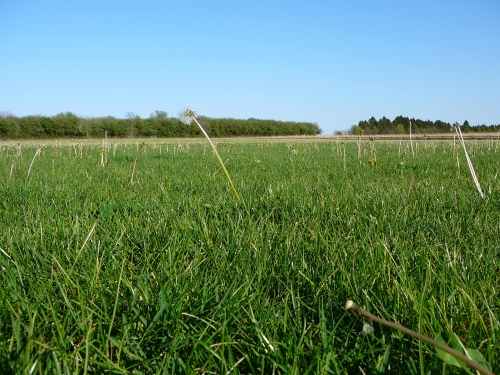This post is a quick guide to a very practical issue that could be discussed in much greater detail – and has been. After you win your online land auction or whatever type of property you’ve purchased, you may be looking to build yourself a cabin, lodge, hut, lean-to, or something of that nature. I’m sure you have a number of great ideas in your head of what the materials will be, and the layout for the floor plan, and all the other details all the way down to the trim work. But you’re forgetting one thing: Where the hell you’re putting your house on your land. So here’s a few tips to keep in mind when selecting the site for your building:
1. Don’t Build in a Valley
There are a number of great and enticing sites in valleys that you could build a home. The soil is usually fertile and good for plants and crops. However, water tends to head towards valleys, and where there is much water, there is dampness, which is something you want to avoid at all costs. Also worth noting is that valleys may be colder in the wintertime in small or deep valleys compared to the surrounding land.
2. Don’t Build on Top of a Hill
It’s probably going to be tempting to build your home at the top of a hill. The view is amazing, there’s horizon in all directions, and you can easily take scope of the land beneath you. It’s quite easy to feel like a king in your new castle. However, you’ll face a few difficulties which you should consider. First, getting materials to the top of a hill will be difficult. Modern machinery has solved this problem to a degree, but can your material distributor’s flatbed get to your building site to drop off plywood, beams, cement, and more? During the building process, you’ll need a lot more room than just the footprint of the home. After the home is built, are you going to be able to get water to the site without hiring the Army CORPS to design the network of pumps necessary get *really* weak pressure to your shower? And on cold windy nights, will your home be naturally protected from the elements? When you take your daily walk through your land and property, are you going to forever dread the 400 foot climb to get back to the porch? These are serious considerations that affect your enjoyment of you property and even the marketability of the property down the road. Take some time to get this right.
3. Southern Exposure is Just SMART
Southern exposure, if you haven’t heard the term before, is the way the sun is angled to the South as it passes through the sky each day (but only in the Northern Hemisphere). By utilizing a few basic passive solar techniques, an architect or builder can build a very efficiently heated and cooled home simply by taking advantage of the how high the sun is during winter and summer. Here’s a good explanation of proper home orientation to utilize Southern exposure.
4. Set Your Home Away from the Road
Do you enjoy the sound of the neighbor’s 17-year old son ripping past your bedroom window in the $600 off-roading 4-Runner they got him for his birthday? How about at 1AM? I didn’t think so. You bought this place for at least a degree of privacy, both visually and acoustically. Make sure you take advantage of it.
5. Plan Your Entry Drive
Part of locating your home away from the road involves a lengthy drive way. A quick tip? Don’t draw a straight line from the property entrance to you garage. Take a page from the Beatle’s and make it a long and winding road. It’s more aesthetically pleasing for a number of reasons, and it will ease your headache when you find out there’s a 5 ton boulder in the middle of your pencil-straight driveway.
6. Don’t Build on Bad Soil
This is a trickier topic to delve into on your own, but hiring a knowledgeable builder to help with all of the above can certainly help you avoid building on bad soil, as well. If the soil is wet? Better find out if it’s like that often. The drier the better, in fact.
So Where Should I Build?
Well, it’s pretty simple. If you cut out all of the above no-nos, you’re left with this: Build on a middle elevation on your property, not too low but not rising above the natural protection of the trees and earth, on a dry piece of land, with good Southern exposure, and plenty of space around the building site to make building easier, as well as make room for outbuildings, gardens, and other future projects. Furthermore, consult an architect with knowledge of passive solar heating or study up on the topic yourself, and you’ll be a lot better off.
Recommended Reading for Choosing Where to Put Your Home:

Leave a Reply